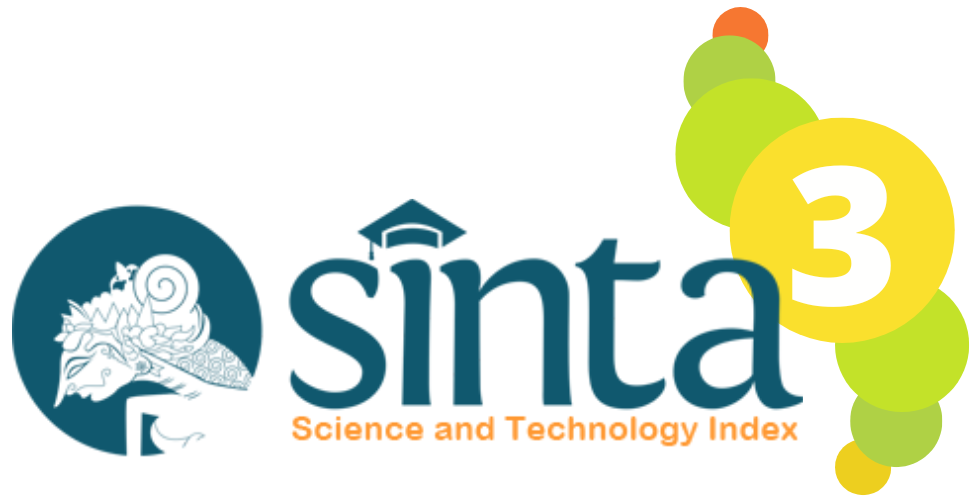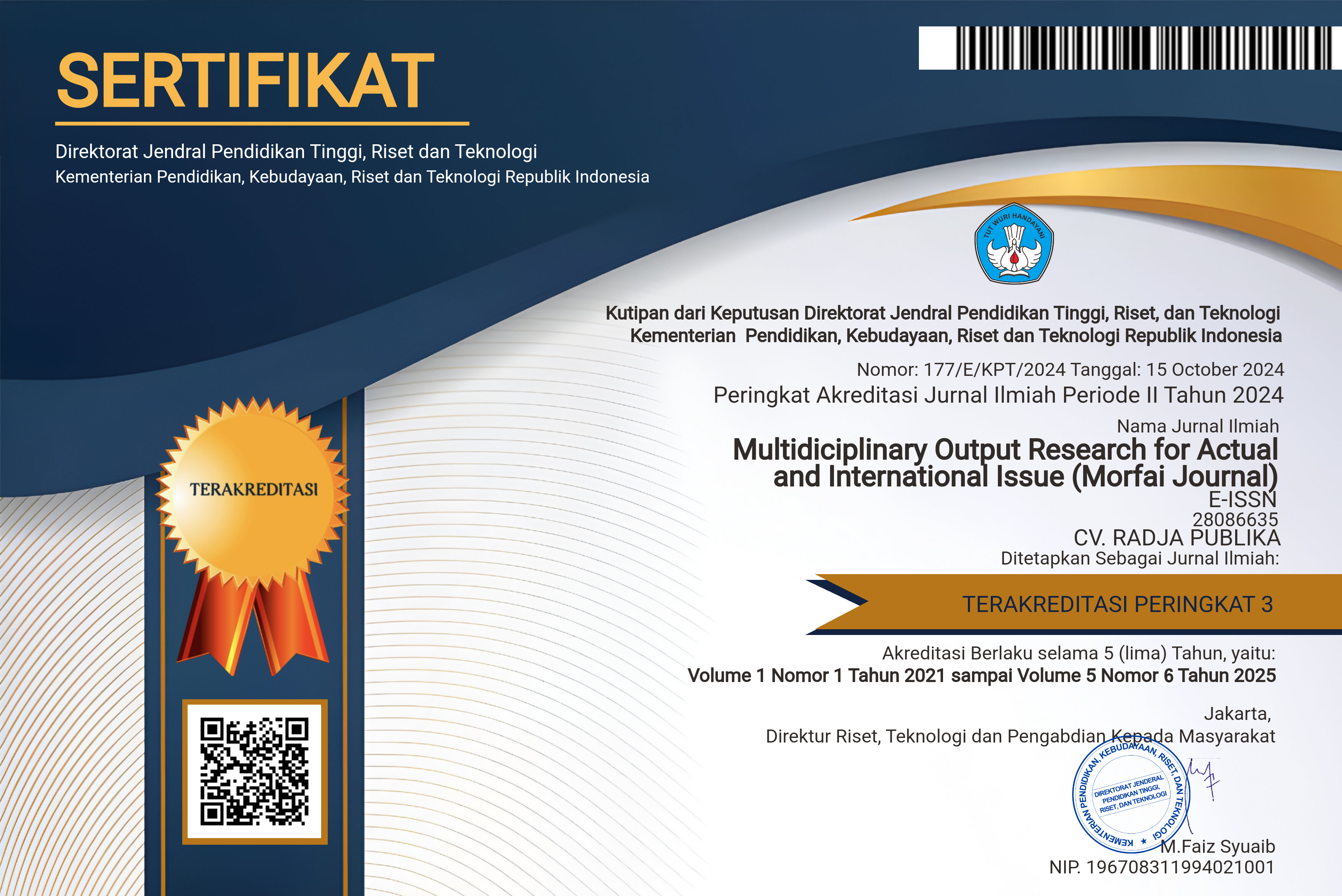PRODUCT QUALITY AND PURCHASE INTENTION EFFECTS ON MARKETING PERFORMANCE: THE MEDIATING ROLE OF PURCHASE DECISIONS IN FOOD-PROCESSING MSMES 4.0
DOI:
10.54443/morfai.v5i6.4468Published:
2025-11-17Downloads
Abstract
This study aims to analyze the influence of product quality and buying interest on marketing performance mediated by purchasing decisions in MSMEs 4.0 in the food processing sector in Sidoarjo. An explanatory quantitative approach was used with a cross-sectional design, involving 296 respondents selected through proportionate stratified random sampling technique. Data were collected using a Likert scale questionnaire (1–5) adapted from standardized instruments, then analyzed with Partial Least Squares Structural Equation Modeling (PLS-SEM) using SmartPLS 4.0. The results showed that product quality had a positive and significant effect on purchase interest and purchase decisions, while buying interest was proven to be a partial mediating variable between product quality and purchase decision. Purchasing decisions directly affect the marketing performance of MSMEs. Predictive analysis through PLSpredict confirms that the model has high predictive relevance to consumer behavior in the digital marketing era. These findings confirm that strengthening product quality, followed by a digital marketing strategy based on consumer interaction, is an important determinant in increasing the competitiveness and sustainability of MSMEs 4.0 in the processed food sector. This research contributes to the empirical literature on technology-based marketing and provides strategic recommendations for the development of MSMEs in the digital economy era.
Keywords:
Product Quality, Purchase Intention Effects, Marketing Performance, Purchase DecisionsReferences
Arikunto, S. (2016). Research Procedure A Practical Approach (14th ed.). Jakarta: Rineka Cipta.
Armstrong, M., & Taylor, S. (2020). Armstrong's Handbook of Human Resources Management Practice, 15th Edition. in Human Resource Management.
Barney, J. B. (2001). Is The Resource-Based "View" A Useful Perspective For Strategic Management Research? Yes. Academy of Management Journal, 26(1), 41–56. https://doi.org/doi:10.2307/259393
Chaffey, Dave., & Chadwick, F. E. (2016). Digital Marketing Strategy Impelementation and Practice (6th ed.). Pearson.
Evelina, Nela., Handoyo D.W., and S. L. (2012). The Influence of Brand Image, Product Quality, Price, and Promotion on Telkom Flexi Starter Pack Purchase Decisions. Journal of Business Administration Sciences, 1(1), 203–213.
Farzin, M., & Fattahi, M. (2018). eWOM through social networking sites and impact on purchase intention and brand image in Iran. Journal of Advances in Management Research, 15(2), 161–183. https://doi.org/10.1108/JAMR-05-2017-0062
Fatmawati, F., & Sulistyandari, S. (2021). Digital Marketing Strategy for Processed Food MSMEs in the Covid-19 Pandemic Era. Journal of Economics and Business, 24(1), 1–18. https://doi.org/https://doi.org/10.24914/jeb.v24i1.3745
Geng, R., Wang, S., Chen, X., Song, D., & Yu, J. (2020). Content marketing in e-commerce platforms in the internet celebrity economy. Industrial Management and Data Systems, 120(3), 464–485. https://doi.org/10.1108/IMDS-05-2019-0270
Ghozali, I. (2019). Partial Least Square: Concepts, Techniques, and Applications Using SmartPLS 3.0 Program for Empirical Research, Edition 2. University of Dipenegoro.
Hair, J. F., Sarstedt, M., Matthews, L. M., & Ringle, C. M. (2021). PLS-SEM: Indeed a silver bullet. Journal of Marketing Theory and Practice, 19(2), 139–152. https://doi.org/10.1080/10696679.2019.1632725
Hartley, R. A. K. S. W. (2018). Marketing: The Core (sevent). McGraw-Hill Education.
Henseler, J., Ringle, C. M., & Sarstedt, M. (2016). Testing measurement invariance of composites using partial least squares. International Marketing Review, 33(3), 405–431. https://doi.org/10.1108/IMR-09-2014-0304
Hrubes, D., Ajzen, I., & Daigle, J. (2010). Predicting Hunting Intentions and Behavior : An Application of the Theory of Planned Behavior. An Interdisciplinary Journal, February 2013, 37–41.
Huang, R., & Sarigöllü, E. (2014). Assessment of Brand Equity Measures. International Journal of Market Research, 56(6), 783–806. https://doi.org/10.2501/IJMR-2014-037
Icek Ajzen, Martin, F. (1972). The Influence of Attitudes on Behavior. Journal of Educational Research, 66(4), 147–148. https://doi.org/10.1080/00220671.1972.10884434
Ministry of Cooperatives and Small and Medium Enterprises of the Republic of Indonesia. (2023). Prospects for Processed Food MSMEs in Indonesia (Vol. 35, Issue 3).
Kotler, P. and Keller, K. . (2016). Marketing Management. Prentice Hall.
Kotler, Philip., & Keller, K. L. (2016). Marketing Management 15th Global Edition (S. Wall (ed.); 15th ed.). Pearson Education Limited.
Kotler, P., & Gertner, D. (2002). Kotler-Gertner2002_Article_CountryAsBrandProductAndBeyond. Henry Stewart Publications 1350-231X, 9(4), 249–261.
Kotler, P., & Keller, K. L. (2021). Marketing Management (16th ed.). Pearson Education.
Kotler Philip Armstrong. (2015). Marketing an Introduction (I. Pearson Education (ed.); twelfth ed). Prentice Hall.
Kumar, V., Dixit, A., & Javalgi, R. (2020). Do digital marketing strategies always improve performance? Journal of Business Research, 116, 209–220.
Lee, J., & Ko, S. (2016). Effect of the In-Flight Meal Service Quality on the Customer Value and Loyalty. Indian Journal of Science and Technology, 9(26). https://doi.org/10.17485/ijst/2016/v9i26/97276
Maria Assumpta et al. (2023). Pkm Lecturer on the Implementation of Marketing Strategy through the Analysis of MSME Sales Data in Dki Jakarta. Batara Vishnu ..., 3(3), 732–740. https://doi.org/10.53363/bw.v3i3.235
OJK. (2022). Press Release of the 2022 National Survey on Financial Literacy and Inclusion. Financial Services Authority, November, 10–12.
Oliver. (1997). Satisfaction, a behavioral perspective on the consumer. McGraw-Hill.
Porter, M. E. (2008). The five competitive forces that shape strategy. Harvard Business Review, 86(1), 1–36.
Prasetyo, E. (2015). Readiness of the Textile Industry in Supporting the Maritime Axis and Increasing Competitiveness. Proceedings of the National Seminar on Multi-Disciplinary Sciences and Call For Papers Unisbak, 978–979.
Rahmadani, R. D., & Subroto, W. T. (2022). Analysis of the Development Strategy of MSMEs in Sidoarjo Regency during the Covid-19 Pandemic. Journal of Office Administration Education (JPAP), 10(2), 167–181. https://doi.org/10.26740/jpap.v10n2.p167-181
Saori, H., Pratama, D., & Wulandari, R. (2021). Determinants of marketing performance: Evidence from SMEs. Journal of Business and Management Research, 18(4), 77–89.
Schiffman, L. & Kanuk, L. L. (2007). Consumer Behavior. In Prentice-Hal (9th ed.).
Sekaran, U., & Bougie, R. J. (2016). Research Methods For Business: A Skill Building Approach Seventh Edition. John Wiley & Sons.
Setiawan, T. F., Suharjo, B., & Syamsun, M. (2019). Online Marketing Strategy for Food MSMEs (Case Study in Cibinong District). SME MANAGEMENT: Journal of Small and Medium Industry Development Management, 13(2 SE-Vol. 13 No. 2), 116–126. https://doi.org/10.29244/mikm.13.2.116-126
Spence, M. (1973). Spence1973 - Job Market Signaling. The Quarterly Journal of Economics, 87(3), 355–374.
Supriadi et al. (2021). Build the company's brand image and product quality in mediating the influence of e-WOM on purchase decisions through digital applications. Mixed Scientific Journal, 11(3), 311–330. https://publikasi.mercubuana.ac.id/index.php/Jurnal_Mix/article/view/10621/pdf
Tambunan, T. (2019). Recent evidence of the development of micro, small and medium enterprises in Indonesia. Journal of Global Entrepreneurship Research, 9(1), 18. https://doi.org/10.1186/s40497-018-0140-4
Zeithaml, V. A. (1988). Consumer Perceptions of Price, Quality, and Value: A Means-End Model and Synthesis of Evidence. Journal of Marketing, 52(3), 2–22. https://doi.org/10.2307/1251446
Zeithaml, V. A., Bitner, M. J., & Gremler, D. D. (2010). Services Marketing Strategy. Wiley International Encyclopedia of Marketing. https://doi.org/10.1002/9781444316568.wiem01055
License
Copyright (c) 2025 Djoko Nusantoro , Yudi Nur Supriadi

This work is licensed under a Creative Commons Attribution 4.0 International License.











